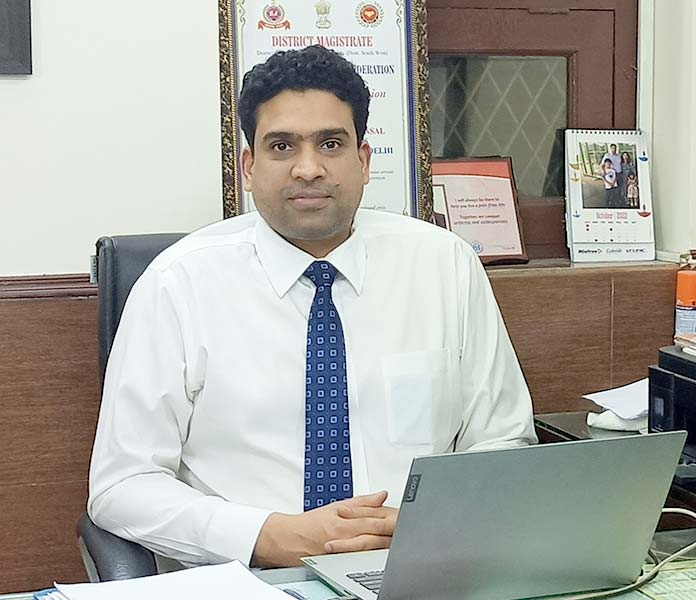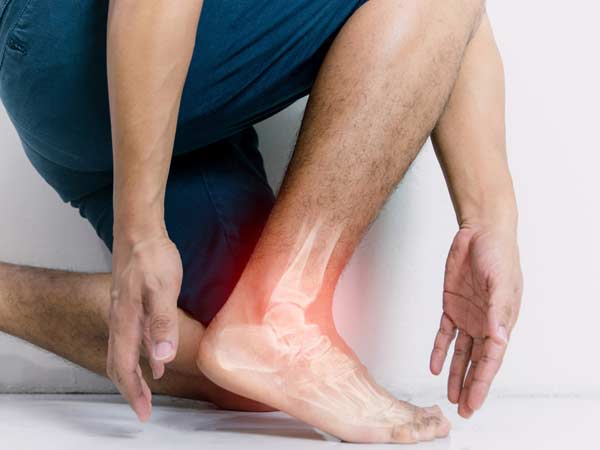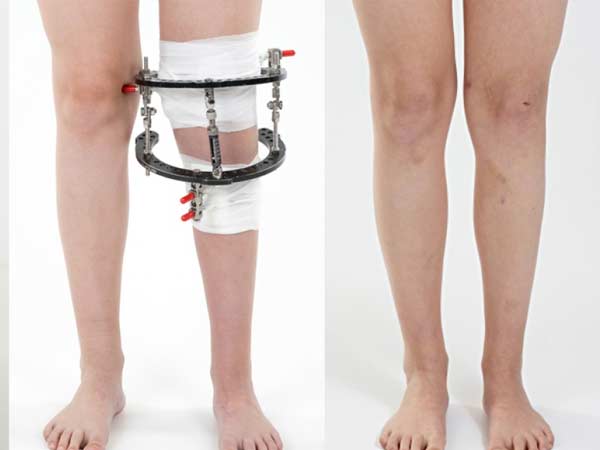The spinal cord is protected by the bones of the spine as it travels from the brain to lower back, with a number of spinal nerve travelling across the spine to reach arms and legs.
To exit from the bony tunnel of the spine itself, the spinal nerves travel through holes in the bones which are separated by discs or shock absorbers. If these nerves are squashed or pinched, this can cause pain, numbness, weakness or loss of function in the limbs (sciatica).
There are many bones running up and down the spine, each separated by a jelly-like core and tough outer fibrous structure called a disc.
The nerves travel to the left and right of the spine through space called an intervertebral foramen. Either these nerves or the spine itself can be compressed by either further growth of bone, instability of the bone, or bulging or bursting of the disc ( disc prolapse ).
The symptoms to be particularly aware of are:
- pain in neck/back
- pain radiating to arms/legs
- pain after walking / standing/sitting for too long
- Weakness and numbness in arms or hand/legs or feet.
- Balance problems.
- Loss of function in the arms or legs.
- Pins and needles sensation in the limbs
- Diminishing bladder control.
Investigations
After a thorough history and investigation, you may be required to have an x-ray, CT scan or MRI to look more closely at the bone and soft tissue structures around the neck.
Treatment
REST, MEDICATION AND PHYSIOTHERAPY, generally cure most patients in short term. But most pain can reoccur if your ergonomics (working and sitting posture) are not right. Long term solution to a problem is EXERCISE AND the RIGHT POSTURE.
Surgery
Sometimes surgery is required if the pain is severe and not responding to conservative therapy. Certain types of compression require surgery to prevent nerve damage from becoming permanent or irreversible. Surgical options include removing excess bone, removing bulging discs, fusion or stiffening of bones to remove instability or replacing dysfunctional discs. The disc can be removed with very minimal incision using endoscopes ( ENDOSCOPIC DISCECTOMY) or sometimes open surgery is required to fix ( TLIF )the spine segment and to decompress the nerves.
WHAT CAUSES SPINE PROBLEM
Since the IT boom, we are growing very fast economically and digitally. But somewhere compromising health especially our back and neck, Due to a prolonged sitting hour (10-12 hrs) on computer and top of that some of you are travelling to Noida /Gurgaon, again sitting for 2-3 hrs too n fro. This article is all about pains in the back, neck, shoulder, forearm and legs from which you may be suffering, the pain doesn’t correlate to your work.
“Mr X doesn’t wear a hard hat to work. He doesn’t lift heavy objects nor does he operate heavy machinery. Actually, Mr. X wears fairly comfortable clothing, and he doesn’t need to exert a lot of physical energy to accomplish his tasks. He sits at his desk from 8 a.m. to 5 p.m., Monday to Friday, and the only machinery he has to operate is a mouse and keyboard. Sitting in his office, Mr. X is generally safe and secure from injury………but still suffers from pain.”
Our bones and muscles make up our musculoskeletal system. As strong as this system might be, overuse of the muscles through repeated movements can put stress on your body, causing a Repetitive Strain Injury (RSI). Other names for RSI include Cumulative Trauma Disorder and Repetitive Motion Injury. Unfortunately, many office jobs require that we perform repetitive motions to fulfil our duties. For this reason, RSIs are the most common type of injury found in the office.
Symptoms of RSIs The first signs of an RSI may be subtle and mild, and the symptoms may appear long after performing the activity. For these reasons, people often ignore slight aches and pains, but eventually, these slight aches and pains can become serious problems down the road if ignored. Symptoms may include: • Dull aching • Loss of sensation (numbness), especially at night • Aches/pains which may be worse at night • Tingling and burning sensations • Swelling around the wrist/hand • Dry, shiny palm • ‘Pins and needles’ discomfort • Clumsiness (loss of ability to grasp items, impaired thumb and finger dexterity • Muscle weakness and fatigue • Muscle spasm • Joint restriction/loss of movement • A ‘crackling’ feeling when swollen tendons are pressed tightly • A cyst-like swelling or node, known as a ganglion, near a tendon or joint
Injury to the spine is very common in the office environment because constant sitting (desk job) either working on laptop or desktop, spine (lower back) is at risk. Because sitting causes 150%-200% stress on back while standing just 100%, sitting with a laptop is worse than desktop because of poor posture with a laptop. This constant sitting is just like a small drop of water in a big bucket, over a period of time bucket is filled, water splashes out, that is the time when people experiences severe pain. Getting treatment just takes out a few mugs of water but that little drop (constant sitting) still coming to a bucket. That means pain may reoccur. So what to do…”..STOP THE LITTLE DROP”
HOW TO SAVE BACK & NECK FROM SITTING JOB STRESS
- AVOID PROLONGED SITTING > 45 MINS – do not sit more than 45 min at a stretch, get up after 45 mins take 2 min walk than sit again
- AVOID FORWARD BENDING – Bending forward causes double the stress over neck n back, our head wt is around 5 kg which increases to 30 kg if we bend our neck up to 60 degrees. so keep your head centre of shoulders. if u want to bend n lift something from lower down than bend from knee and hip as well so that stress on the spine is less.
- AVOID HEAVY WT LIFTING – keep ur back as straight as possible while lifting wt or ask for help while lifting heavy wt.
- FULL CHAIR SITTING – Try to sit in the office chair with hips at the back of a chair and back fully supported with backrest, by this your back is fully supported n slightly backwards tilted, keeping stress low on spine . do not sit half chair.
- LAPTOP TO DESKTOP – with laptop one has to bend forward and work as in laptop screen and keyboard is so close to each other that you cant work without bending forward. So dissociate screen from the keyboard by using an external keyboard( preferably wireless ) and external mouse with laptop stand to keep the screen at your eye level.
- HOLDING MOBILE AWAY FROM BODY – So that neck does not bend too much for long, keep the neck as straight as possible.
- NEVER WORK IN BED OR WITH BAD POSTURE – as it causes severe stresses on back and neck
- DAILY EX- Daily exercise of neck and back strengthens muscles so that they can take stresses of sitting






